Sponsored by Genizer LLCReviewed by Louis CastelDec 12 2022
NanoGenizer is a lab-scale microfluidic high-pressure homogenizer that employs interactive high-pressure microfluidic jet technology and is equipped with extremely flexible power and processing modules.
NanoGenizer is suitable for processing rare and expensive samples because of its minimal dead volume design and continuous flow rate of up to 120 mL/minute.
NanoGenizer has garnered a growing reputation in many nanotechnology applications because of its notable shear rate, remarkable repeatability, and guaranteed scalability.
NanoGenizer offers practical solutions for several nanomaterials, such as liposomes, nano-emulsions, nano-crystals, lipid nanoparticles, cosmetic nano-encapsulation materials, graphene, and carbon nanotubes.
NanoGenizer will become an important high-pressure homogenizer for laboratories preparing high-end nanomaterials as more and more organizations recognize its benefits.
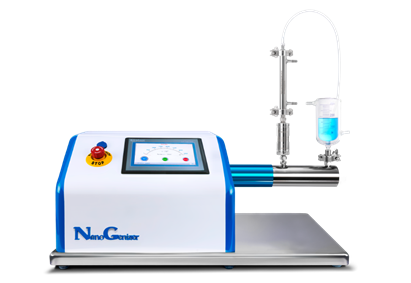
Figure 1. NanoGenizer microfluidic jet high pressure homogenizer. Image Credit: Genizer LLC
Core Technology: Interaction Chamber with Microfluidic Jet
NanoGenizer can be separated into two parts: the power unit (which includes the power system, control system, and high-pressure pump system) and a processing unit (which consists of the microfluidic diamond interaction chamber, material inlet and outlet, and heat exchanger).
The diamond interaction chamber is a reaction module with a specially-designed fixed shape where high-pressure, high-velocity micro-jets occur and samples are analyzed.
After being pressurized and propelled by the intensifier, the micro-jet of the sample can reach velocities of 1,000 m/second, much faster than the speed of sound (340 m/second).
When the high-velocity bullet-type micro-jet travels through the micro-channels diamond interaction chamber, it experiences complex physical phenomena, such as high-frequency shearing, high-energy impact, cavitation, and pressure drop. The substance is then homogenized and nano-sized.
The diamond interaction chamber is the core region where the high-velocity micro-jets, high-shear, high-energy collisions, and other effects occur. Its internal Y- or Z-shaped diamond microchannels provide a consistent effect, ensuring precise and repeatable particle size distribution.
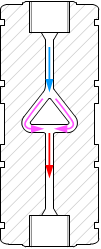
Figure 2. Schematic of the internal structure of the DIXC. Image Credit: Genizer LLC
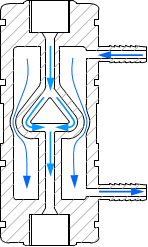
Figure 3. Single-slotted interaction chamber with cooling system. Image Credit: Genizer LLC
Features of the NanoGenizer High-Pressure Homogenizer
High Shear Rate
The liquid or solid-liquid hybrid sample’s micro-jet may achieve speeds of up to 1,000 m/second inside the diamond interaction chamber (DIXC) after being pressurized by the power unit.
The minimum dimension inside of the DIXC can be as low as 50 μm. As depicted in Figure 4, NanoGenizer’s shear rate is the highest among similar technologies.
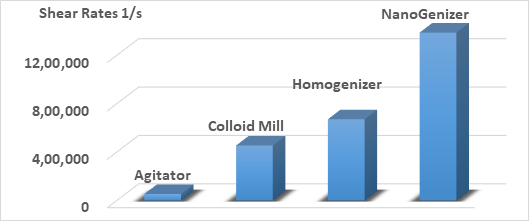
Figure 4. Shear rates of comparable homogenizing technologies. Image Credit: Genizer LLC
The shearing force of NanoGenizer’s high-pressure homogenizer on the material is unrivaled by traditional homogenizers or other homogenizing devices.
Fixed Internal Structure and Consistent Reaction Pressure
The interior geometry of the diamond interaction chamber is fixed (Figures 5 and 6) and does not change with pressure variations. When the sample goes through the DIXC, the applied pressure remains at a constant peak during each cycle’s process (as seen by the blue curve in Figure 7).
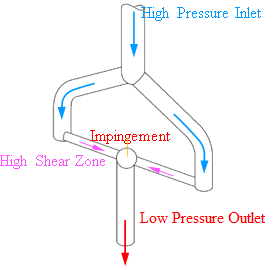
Figure 5. Single-slotted Y-type microfluidic diamond interaction chamber. Image Credit: Genizer LLC
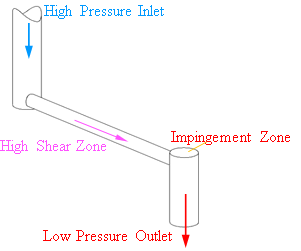
Figure 6. Single-slotted Z-type microfluidic diamond interaction chamber. Image Credit: Genizer LLC
The conventional homogenizing valve, on the other hand, has a dynamically changeable structure. The material’s pressure changes dynamically when it travels through the valve of a conventional homogenizer, which operates at peak pressures for only a few seconds every cycle (the black curve in Figure 7).
The microfluidic diamond interaction chamber efficiently reduces the particle size of the treated material, resulting in a more uniform distribution than is possible with a traditional homogenizing valve.

Figure 7. Pressure curve during the homogenization process. Image Credit: Genizer LLC
Interaction Effect
The design of the Y-type DIXC maximizes the interaction collision between the materials themselves. The relative instantaneous velocity of the two jets is doubled, producing an explosive effect.
The collision between the materials significantly reduces the materials’ wear and shear in the interaction chamber, hence extending the chamber’s service life and eliminating the danger of stainless-steel particles falling off.
The bioactivity of the samples is preserved by the proprietary DIXC-RT with a chilling function (Figure 3).
Guaranteed Scalability
The single-slotted DIXC (shown in Figures 2 and 3) is best suited for lab-scale high-pressure homogenization devices.
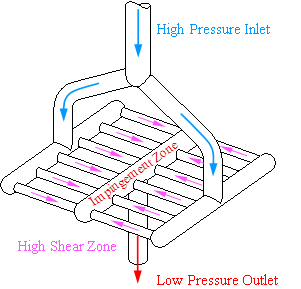
Figure 8. Multi-slotted Y-type microfluidic diamond interaction chamber. Image Credit: Genizer LLC

Figure 9. Multi-slotted Z-type microfluidic diamond interaction chamber. Image Credit: Genizer LLC
The multi-slotted DIXC (shown in Figures 8 and 9) is made of parallel copies of multiple diamond microchannels, ensuring the uniformity of the treatment effect. The increased number of channels also allows for a greater volumetric flow rate.
Genizer LLC is one of only two suppliers of high-pressure homogenizers equipped with innovative microfluidic diamond interaction chambers in the world.
In recent years, an increasing number of homogenizer manufacturers have used Genizer’s microfluidic diamond interaction chambers in their equipment.
Easy to Operate and Intelligent
NanoGenizer’s highly adaptable and integrated control architecture makes it very easy to install and operate. Operators can conduct routine procedures by clicking only three buttons on the touch screen: “pressure rate,” “start,” and “stop.”
Customers find the equipment easy to use as they only need to set the pressure on the screen and then click the start or stop button. There is no need to forcefully tighten the valve or waste any sample while adjusting the pressure.
To process a particularly small volume, you can set the sample volume, the stroke cycle times, and the automatic stop time on the setup interface. The NanoGenizer’s operation is elegant and efficient when compared to similar high-pressure devices.
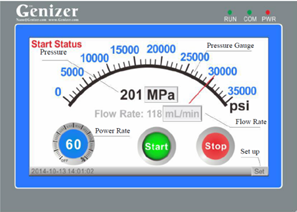
Figure 10. Operation interface of the NanoGenizer. Image Credit: Genizer LLC
Small Minimum Sample
The highly modular design of NanoGenizer also allows for easy installation and maintenance.
The dead volume is less than 1 mL, far below the dead volume of comparable high-pressure homogenizers, which is typically greater than 10 mL. As a result, it is very difficult to get the product from the outlet when a 10 mL sample is processed in traditional homogenizers.
By automatically setting the volume, NanoGenizer’s modular pipeline design can achieve a minimum single processing volume of 5 mL, making it the ideal piece of equipment for preparing and developing rare, expensive samples. The continuous flow rate of NanoGenizer is 7 L/hour, suitable for conventional small batches.
Software and Hardware Options
- Temperature Control: Jacketed interaction Chamber; jacketed inlet cylinder; 3D heat exchanger
- Suspension Preparation: Hollow magnetic stirrer
- Corrosion Resistance: Titanium cylinder option
- Precision Sampling: Precision sampling as accurate as 0.1 mL (e.g., 10.0 mL, 10.1 mL, and 10.2 mL sampling are all possible)
- Ports: Data log, USB port, and multi-sensor ports for temperature and pressure
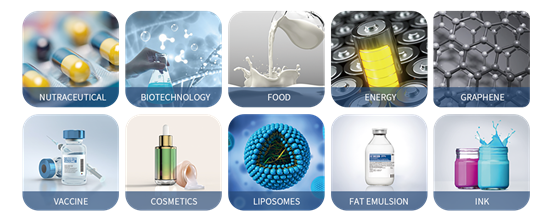
Figure 11. Applications of NanoGenizer for nanomaterials. Image Credit: Genizer LLC
Scientific researchers who have used NanoGenizer are often impressed by its high processing efficiency, easy operation, and intelligent control. NanoGenizer is currently one of the world's most selected homogenizers for nanomaterials.

This information has been sourced, reviewed and adapted from materials provided by Genizer LLC.
For more information on this source, please visit Genizer LLC.